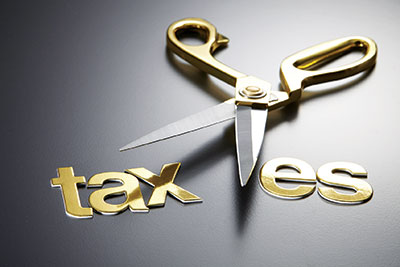
During the presidential election season, one issue that came up was whether or not Donald Trump paid any taxes. I have no insider information on his taxes, but as a CPA, I can come up with a scenario where it would be perfectly legal if he didn’t.
Can a landscape or lawn care business owner avoid taxes the same way Trump might have? I’m not sure you can employ all the strategies Trump has used, but you can use some of them. As a real estate professional, he’s accorded special rules for deductions under the tax code. Many of these rules are designed to promote the development of real estate, which is consistent with maintaining a healthy economy.
In reaction to the small portion of Trump’s 1995 tax return that was obtained and released by The New York Times, many pundits said Trump’s use of tax loopholes were scandalous tactics created for the rich by the rich. The Times article suggested that rich folks use partnerships, limited liability companies and S corporations to minimize taxes and to limit liability. This is true. Rich businesspeople use pass-through entities, but so do ordinary businesspeople. These strategies are open to everyone and are used at one point or another by most prudent businesspeople.
The most talked about strategy Trump employed is the net operating loss (NOL) deduction. An NOL is a loss. Plain and simple, expenses exceed revenues for a period. If you have a real economic loss, perhaps a rough year, using an NOL may be beneficial. If an NOL is incurred, the government will allow a taxpayer to offset it against taxable income in a different period. The rationale is that when taxpayers are making money, they pay their annual taxes. So when they lose money, they should be able to get some relief. Instead of each tax year standing alone, the NOL rules consider multiple periods as a taxpayer’s business progresses. The good news is that if you lose money, you can use the NOL to get a tax break. The bad news is that you lost money!
Here are answers to a few other questions. As with any tax or legal strategy, you should do your research and speak to a CPA or tax attorney to determine what’s appropriate for you.
Who is eligible to claim an NOL?
- Individuals (You don’t need to be a business to claim an NOL. From what I can tell, Trump’s NOL was on his personal return.);
- Owners of sole proprietorships;
- Owners of pass-through entity interests, such as partners in partnerships, members of limited liability companies or S corporation shareholders; and
- C corporations.
The most common causes of individual NOLs are business losses; casualty and theft losses; and losses from pass-through entities.
How do you know if you have an NOL?
On your individual tax return, follow these steps to determine if you have an NOL and what you need to do:
- Compete your 1040 individual tax return and look at line 41 (the line that subtracts itemized deductions from adjusted gross income). If this number is negative, you may have an NOL.
- If line 41 is negative, complete IRS form 1045 (application for tentative refund), which after doing some calculations will determine if you have an NOL and how much it is.
- Prepare and file a 1040X (individual amended tax return) to claim your refund.
- If the NOL is not used up by the two preceding years, carry it forward against future income (up to 20 years).
A C corporation is not a pass-through entity. Therefore, when there are losses, the C corporation generates its own NOL, thereby reducing taxes for the carry back/carry forward periods at the corporate level rather than passing to shareholders. The NOL is calculated on the corporate tax return and is maintained there each year with a supporting schedule showing any amounts used to offset tax liabilities.
Using an NOL to reduce taxes
An NOL can be carried back two years and/or carried forward to be netted against future income for up to 20 years. In carrying it back two years, you need to amend those two previous tax returns. Why would you want to carry it back? It seems like a lot of work. Well, if you paid taxes in either of those two years, you can claim the NOL on your amended return and get an immediate refund rather than waiting until the future to offset against future income. In other words, you can get immediate cash.
Photo: ©istock.com/eskaylim


